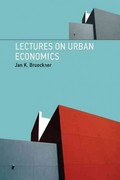Question
please dont accept this if you cant help.This question is based on the optimal size of family. Lets assume consumer establishes hours of labor. This
please dont accept this if you cant help.This question is based on the optimal size of family. Lets assume consumer establishes hours of labor. This N here does not value leisure. The consumer does value the size of their family such that the consumer's utility function is(,), here = consumption,and = family size. Here assuming that the preferences over and are similar to the preferences over consumption and leisure. The consumer always prefers more, the consumer likes diversity, and both goods are normal.a)In a graph with family size = x-axis and consumption = y-axis, can you help draw an indifference curves for these preferences?The consumer receives a real wage for each hour worked and a real dividend . If the consumer decides to have no kids, =0, then that consumer supplies hours of labor. However, for each child, the consumer is required to forgo b hours of labor such that the labor income is (). Note that, since hours worked cannot be negative, cannot be larger than .b) Help create the budget constraint of the consumer by drawing the budget constraint line in a graph with family size = x-axis and consumption = y-axis. (can possibly graph in the same graph of item a)c)deriving from graphs a and b, display the effect of an increase in the non-labor income on the size of the family. Suggestion that the Solow model says that richer countries are associated with smaller families.Is the effect learnt shown in the graph in accordance with the Solow model?d)Take the graph created in the items a and b, show the effect of an increasing real wages on the family size. Make the assumption that the substitution effect is stronger than the income effect. Remember that the Solow model that richer countries are associated with smaller families. But this also implies that they are also associated with high TFP, which means it results/implies higher wages. Is the effect depicted in the graph in accordance with the Solow model?
Step by Step Solution
There are 3 Steps involved in it
Step: 1

Get Instant Access to Expert-Tailored Solutions
See step-by-step solutions with expert insights and AI powered tools for academic success
Step: 2

Step: 3

Ace Your Homework with AI
Get the answers you need in no time with our AI-driven, step-by-step assistance
Get Started


